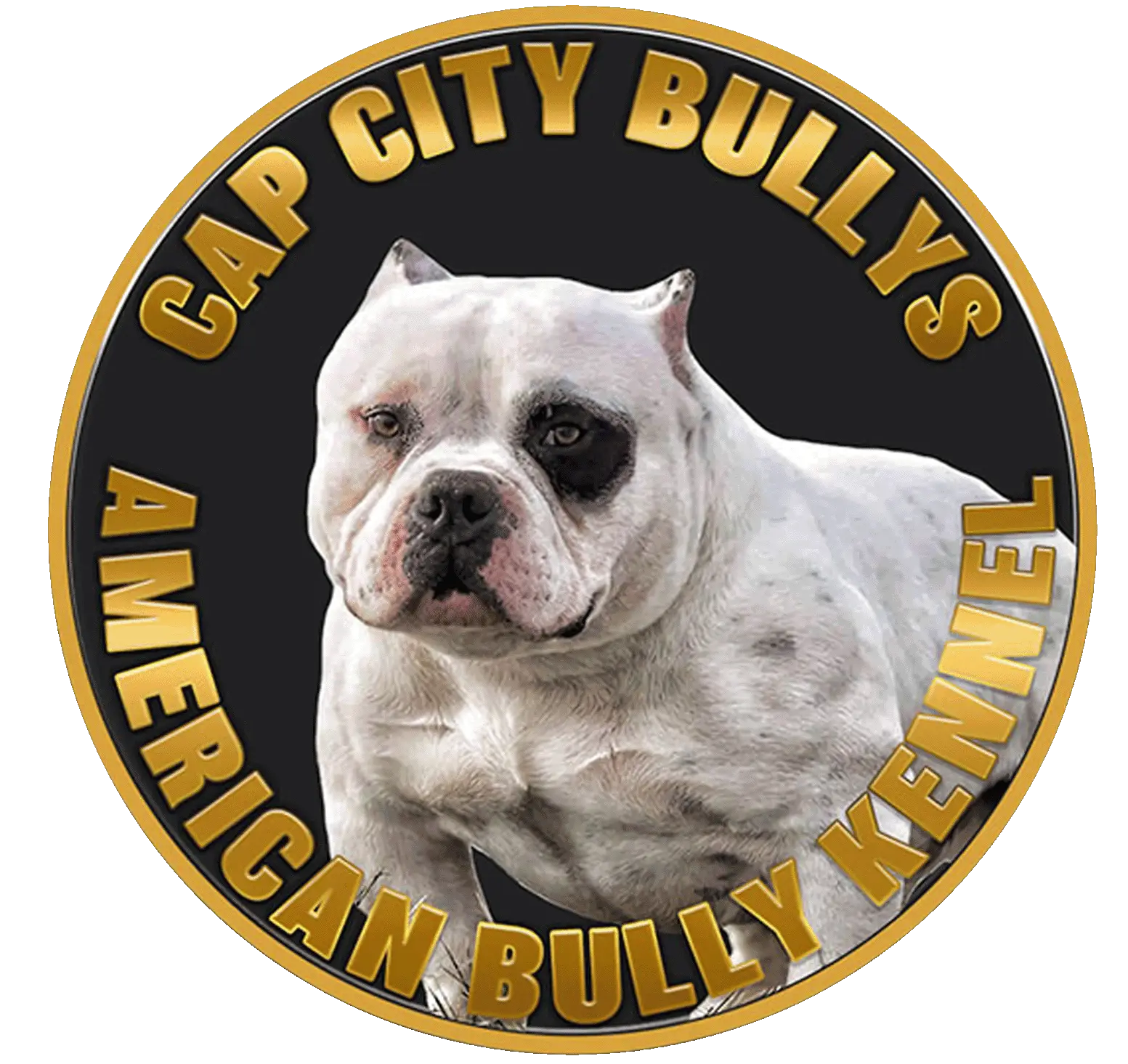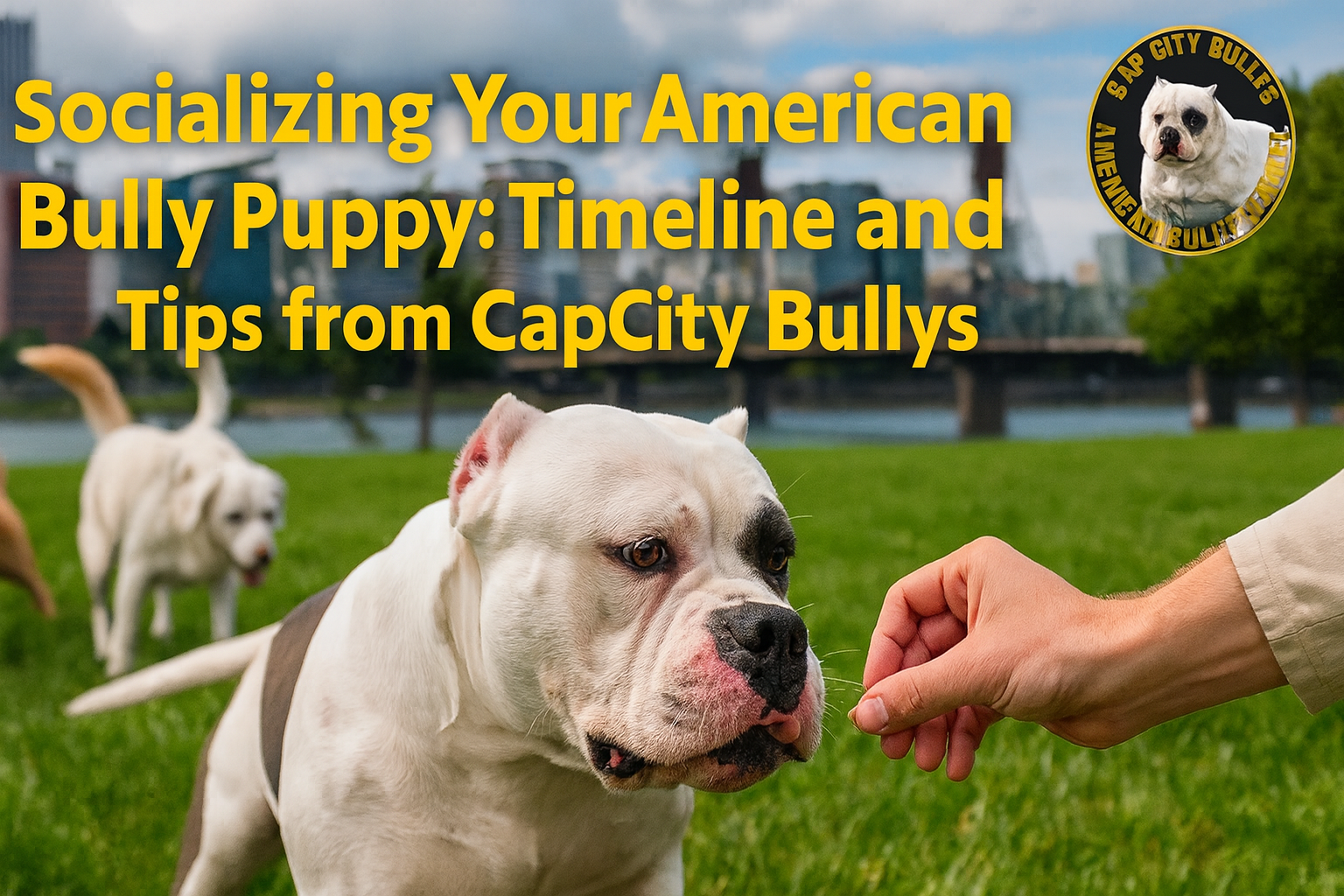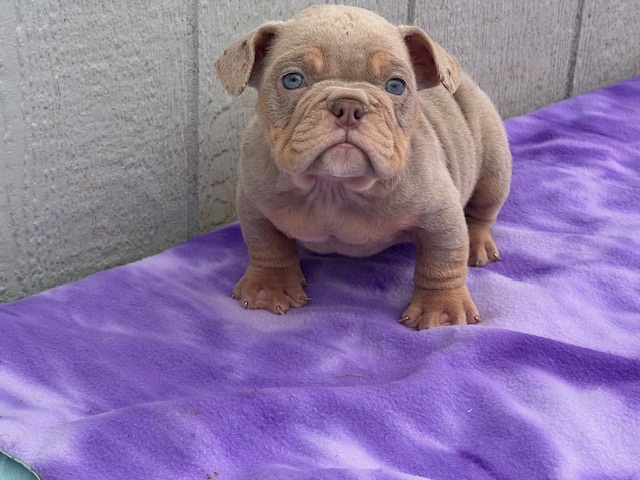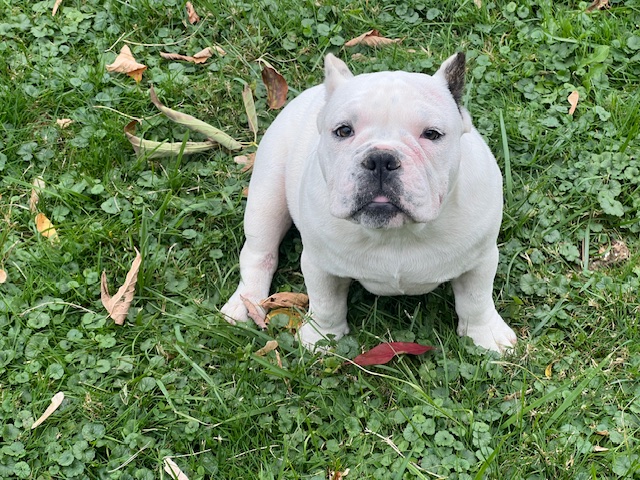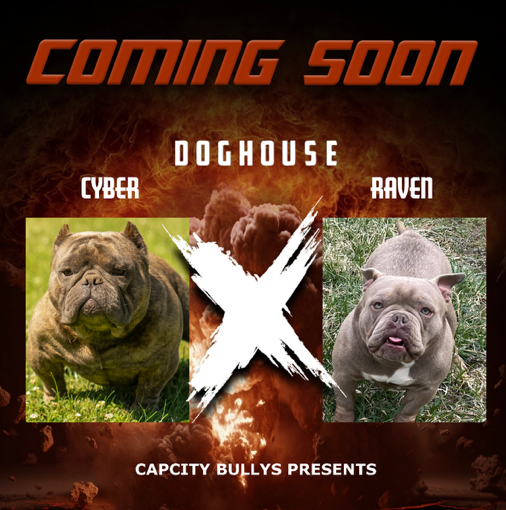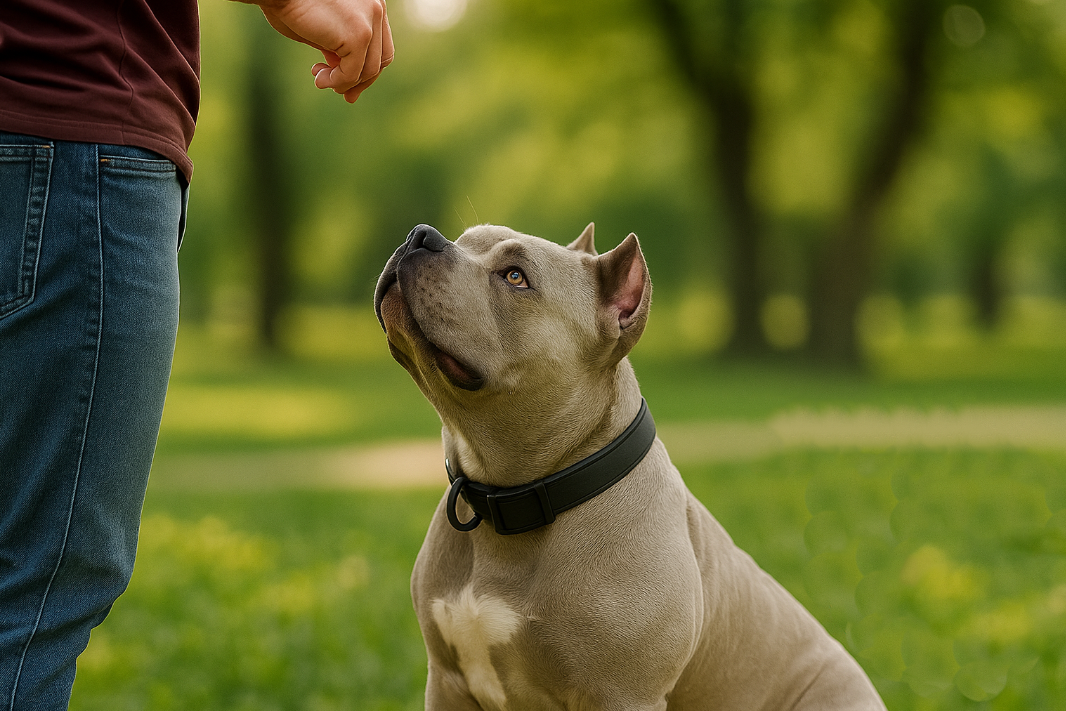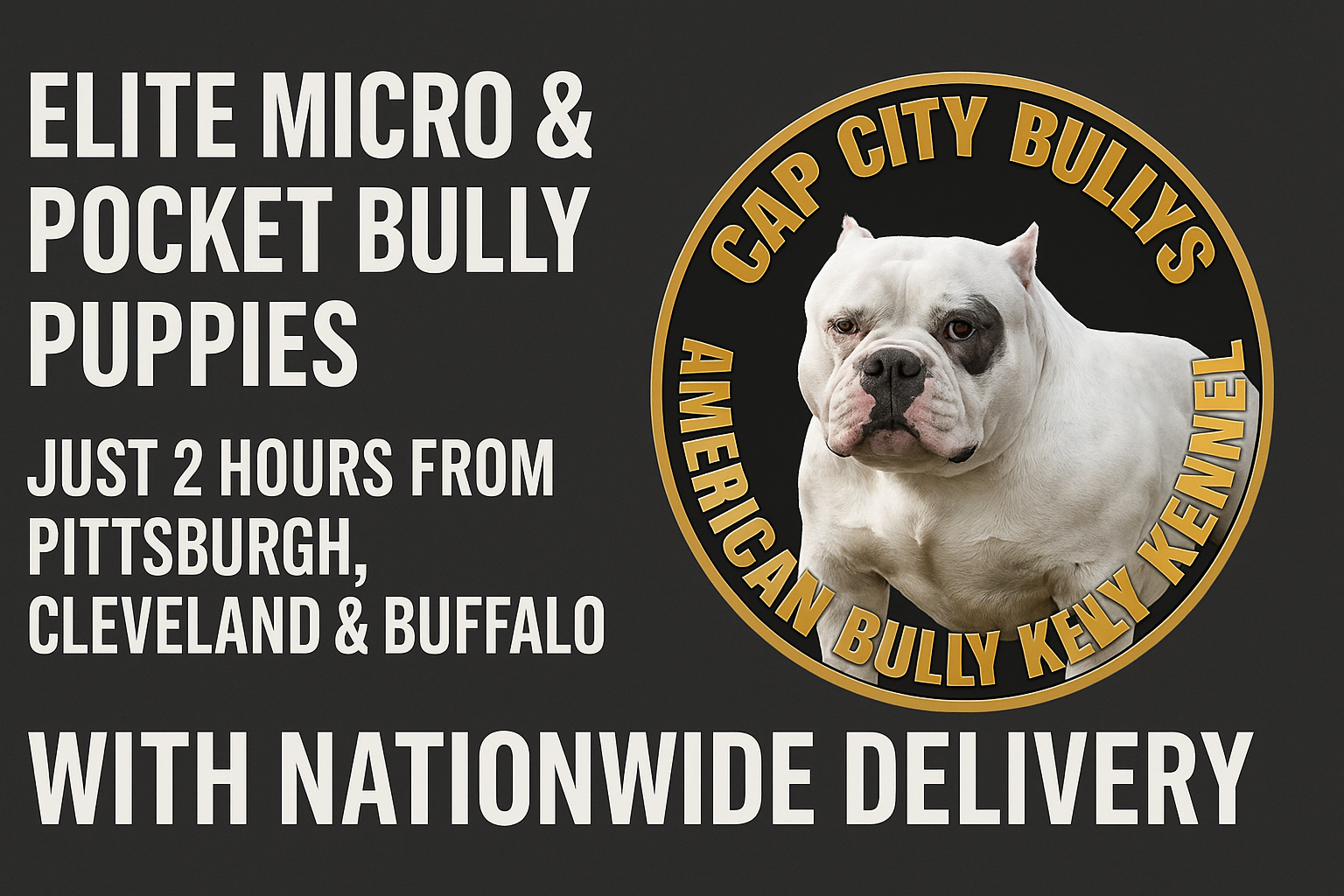Why Socialization Is the Foundation of a Confident American Bully
Bringing home an American Bully puppy is a mix of joy, anticipation, and responsibility. If you want a dog that’s not just physically impressive but emotionally balanced, socialization isn’t optional—it’s essential. Early socialization shapes how your bully perceives the world: people, sounds, environments, other animals, and even unexpected situations. Done right, it results in a confident, adaptable companion. Skip or mishandle it, and you risk fear, reactivity, or behavior that undercuts everything you love about the breed.
At CapCity Bullys, based in Pennsylvania but serving all 50 states with nationwide delivery, we start the process before puppies leave the litter and help owners continue it intentionally. This guide is a complete, easy-to-follow roadmap—from the critical early window to ongoing reinforcement—so you can feel sure you’re doing right by your new family member. We combine breeder-level experience with best practices recommended by the American Veterinary Medical Association, the American Society for the Prevention of Cruelty to Animals (ASPCA), and responsible breeder standards outlined by the American Kennel Club to give you a credible, practical plan that works.
The Sensitive Window: Why Timing Matters
Puppies have a sensitive socialization period, roughly between 3 and 14 weeks of age, when their neurological development makes them extraordinarily impressionable. Positive, controlled exposure during this time sets the baseline for their adult temperament. That means that the experiences you give your puppy in those early weeks—people, noises, surfaces, handling—carry weight that lasts a lifetime.
CapCity Bullys begins the groundwork while the puppies are still with the litter: early handling, mild exposure to varied textures and sounds, and gentle human interaction. That early initiation makes the transition into your home smoother and gives the puppy a baseline of confidence. Your job as the new owner is to continue, expand, and reinforce those early positive associations deliberately.
Week-by-Week Socialization Timeline
Weeks 0–3: Breeder-Level Foundation (What CapCity Bullys Does First)
Before puppies leave CapCity Bullys, they receive:
- Regular human touch to acclimate to handling—paws, ears, light restraint—so future grooming and vet visits are less stressful.
- Introduction to soft environmental stimuli (textures, mild household noises, and variations in surfaces) to prevent future fear of ordinary places.
- Sibling interaction for learning bite inhibition and basic canine body language—critical social learning that no human can replicate fully.
- Calm exposure to different voices and low-level sound cues so sudden noise later isn’t shocking.
This early breeder-phase transparency and structure is something you should highlight in your messaging—link back to your puppy purchase contract and puppy health guarantee pages as proof that your process starts long before the puppy arrives.
Weeks 3–7: Immediate Post-Adoption—Positive Drip Exposure
This period is core to your puppy’s development. The goal is frequent, brief, positive interactions across categories, never overwhelming.
- People introductions: Slowly introduce a mix of genders, ages, clothing styles (hats, sunglasses), and calm energy. Pair each new person with a small treat or praise so the puppy learns that strangers are safe and rewarding.
- Handling practice: Regular gentle touches—lifting paws, peeking in the mouth, touching ears—build tolerance for grooming and vet exams. Keep it light and reward calm behavior.
- Sound acclimation: Introduce household sounds like doorbells, quiet TV background, and distant traffic at low intensity. Always pair with reassurance and reward so the puppy doesn’t attach worry to the novel sound.
- Surface variety: Walk the puppy over carpeting, tile, grass, thresholds, and small steps. Confidence on varied footing reduces future startle responses.
- Controlled dog interaction: If you have access to vaccinated, well-socialized dogs, do supervised introductions in a calm setting. Avoid chaotic dog parks or overly enthusiastic groups that could spike fear or overstimulation early.
The key here is “one new thing per outing”—gradual layering of exposure with the puppy’s comfort guiding pace. If the puppy shows avoidance or freeze behavior, back off just enough and try again later.
Weeks 8–12: Broadening the Palette
With the sensitive window still open, it’s time to diversify and gently increase complexity:
- Varied environments: Short outings in different parts of your home, quiet pet-friendly retail spaces (if vaccine schedule permits), and brief car rides become part of their experience record.
- Puppy classes or guided playdates: Structured, positive-reinforcement puppy socialization classes are valuable during this phase, assuming vaccines are up to date and the environment is controlled. They offer safe peer exposure and foundational obedience.
- Novel objects and mild unpredictability: Introduce umbrellas, harmless “scary” noises (like a vacuum at a distance), and toy variations. Feed positive reinforcement quickly when the puppy responds with curiosity instead of fear.
- Obedience scaffolding: Begin incorporating name recognition, simple cues like “sit” and “come,” and leash practice—not to force compliance, but to build communication and impulse control.
This stage transitions the puppy from passive exposure to interactive learning. Reinforcing calm responses in increasingly real-world contexts builds resilience.
Weeks 13–16+: Generalization and Maintenance
The puppy is maturing, and the initial sensitive period is tapering, but progress should not stop.
- Generalization of behaviors: Practice learned cues in different places, around mild distractions, and with various people to avoid “context-limited” obedience.
- Handling the fear periods: Puppies sometimes experience temporary regressions, especially around 10–14 weeks. Recognize hesitation, reduce intensity, and rebuild trust with small successes.
- Solidifying social habits: Regular low-stress exposures keep new experiences from becoming “novel” again. Socialization becomes a part of lifestyle, not a checklist.
Continued exposure—balanced, consistent, and positive—is how confident adult behavior becomes stable adult behavior.
Core Principles CapCity Bullys Emphasizes
- Reward over correction. American Bully puppies respond best to positive reinforcement; fear and punishment create stress-based behavior.
- Short, repeatable exposures. Multiple 2–3 minute successful introductions outperform marathon sessions that overwhelm.
- Puppy-led thresholds. Learn to read body language—lip licking, turning away, or sudden stillness often means “too much.” Back off slightly and try again later.
- Consistency across handlers. Everyone in the household should use the same language and reward markers; mixed signals cause confusion.
- Progressive challenge. Start easy, then layer in complexity—confidence is built, not forced.
Breed-Specific Considerations for American Bullies
American Bullies look imposing, even when they’re soft inside. That means early exposure to people reacting to their appearance helps the puppy learn that a stranger’s wide-eyed stare or double-take does not signal threat. Calm, positive encounters with new people help defuse potential self-consciousness or watchfulness that could morph into guardedness.
Additionally, Bullies often live in a variety of settings—from tight urban apartments to multi-dog households. Early generalization around sounds, surfaces, and other pets prevents the breed’s natural alertness from turning into nervous hyper-vigilance. Socialization that includes mild novelty keeps them confident rather than defensive.
Long-Distance Buyer Best Practices
CapCity Bullys ships puppies nationwide, so many owners aren’t present for the earliest handoff. Here’s how to maintain continuity if you’re an out-of-state buyer:
- Review the breeder’s socialization summary immediately upon arrival. CapCity provides a temperament baseline and what the puppy has experienced; build your first-week plan to mirror and expand that.
- Use a structured “first week at home” log: schedule specific handling, sound exposure, and environment exploration to ensure nothing falls through the cracks.
- Request a short video temperament check-in if you can’t be there in person. Seeing how the puppy reacts in the breeder’s environment gives insight into what to prioritize and what to watch for.
- Start with familiar routines (feeding schedule, quiet time, familiar caregiver touch) before layering in new stimuli so the puppy feels anchored in your home.
Common Mistakes and How to Avoid Them
- Delaying all socialization until after vaccines are complete. While disease prevention matters, isolation during the socialization window can create fear. The balanced approach is safe controlled exposures (vaccinated people, sanitized environments) while protecting against high-risk situations.
- Overloading with new stimuli in one session. Bombarding the puppy with too much novelty at once leads to shutdown or fear imprinting. Space it out.
- Inconsistent reinforcement. If calm behavior is praised in one room and ignored or corrected in another, the puppy gets mixed messages. Keep your cues and rewards predictable.
- Missing subtle stress signals. Early warning signs—yawning, lip licking, partial body turn—are your chance to adjust before escalation. Ignoring them slows progress.
- Not generalizing lessons. Training in one spot only is useless if the puppy can’t perform the same behavior in a new environment. Practice “sit” in the backyard, the kitchen, by the door, and around mild distractions.
Tools and Tactical Exercises That Work
- Touch-and-Treat Drill: Gently handle paws, ears, and mouth while delivering tiny treats. This conditions calm during physical interaction—critical for vet and grooming visits.
- Name Association Game: Say the puppy’s name and immediately reward to build quick recognition and voluntary attention.
- Threshold Desensitization: Introduce a mildly scary stimulus at a safe distance, reward calm curiosity, then slowly decrease distance over multiple sessions.
- Controlled Stranger Approach: Have a new person approach calmly, pause at a comfortable range, toss a treat, then step back. Repeat to build positive associations with unfamiliar humans.
- Sound Pairing Playlist: Use low-volume recordings of household and outdoor sounds during calm times, gradually increasing intensity as the puppy demonstrates comfort.
- Environment Variety Walks: Walk on different surfaces, through doorways, near harmless moving objects—each with positive feedback to label novel situations as “good.”
Trusted Resources for Puppy Socialization
These reputable sources back the timeline and tips in the article with clear, practical guidance:
- American Veterinary Medical Association puppy socialization guidelines – Learn the veterinary-backed science behind the sensitive socialization window and why early positive exposure builds a stable, confident temperament. https://www.avma.org/resources-tools/pet-owners/petcare/socialization-dogs-cats
- ASPCA puppy socialization recommendations – Get practical, safe exposure strategies, learn how to read subtle stress signals, and understand how to balance developmental needs with health precautions. https://www.aspca.org/pet-care/dog-care/common-dog-behavior-issues/socialization
- American Kennel Club breeder early socialization best practices – See what responsible breeders should be doing in the early weeks and how a smooth handoff to new owners keeps the puppy’s progress moving forward. https://www.akc.org/expert-advice/training/socialization/
Helpful CapCity Bullys Pages
Key CapCity Bullys pages to guide readers on process, protection, and availability:
- CapCity Bullys Homepage – Learn more about the full breeding process and how confident American Bully puppies are raised. https://capcitybullys.com/
- Puppy Purchase Contract – Review the expectations and socialization commitments in the puppy purchase agreement. https://capcitybullys.com/puppy-purchase-contract/
- Puppy Health Guarantee – Understand the health protections provided with every puppy and what is covered. https://capcitybullys.com/capcity-bullys-puppy-health-gurantee/
- Blog Hub – Browse additional owner-focused American Bully education and training guides. https://capcitybullys.com/blog/
- Puppies for Sale – See which American Bully puppies are currently available and get on the waiting list. https://capcitybullys.com/puppies-for-sale/
Frequently Asked Questions About Buying an American Bully Puppy and Choosing a Breeder
What should I look for in a reputable American Bully breeder?
A reputable American Bully breeder prioritizes health testing, transparent bloodlines, early socialization, and clear contract terms. Look for breeders who provide a puppy purchase agreement, health guarantee, and are willing to share pedigree information. They should also be accessible for questions before and after sale and have real testimonials or owner stories.
How do I know if an American Bully puppy is healthy before I buy?
Healthy American Bully puppies come with veterinary checks, up-to-date vaccinations appropriate for their age, and a written health guarantee. A good breeder will let you see the puppy’s parents (or their health records), explain any genetic screening done, and give you a pre-pickup health summary. Watch for bright eyes, clear breathing, good weight, clean coat, and normal energy for the litter’s age.
What is the typical price range for American Bully puppies for sale, and what affects cost?
Prices vary based on bloodline, pedigree quality, color/traits, and breeder reputation. Champion or limited-line litters, rare coloring, and puppies from proven show or stud lines command higher prices. Included extras—like early socialization, initial vet care, microchipping, and delivery—also factor into cost. Transparency from the breeder about what’s included helps you compare apples to apples.
Can I get an American Bully puppy if I don’t live near the breeder?
Yes. Many breeders, including ones serving nationwide, offer delivery or shipping options for American Bully puppies. Responsible long-distance placement includes a temperament summary, clear handoff communication, and guidance for the first week at home. Always clarify logistics, travel conditions, and any additional fees before committing.
What’s the difference between a Micro Bully, Pocket Bully, and Standard American Bully?
The differences are primarily size, proportion, and sometimes breeding standards. Micro and Pocket Bullies are bred to be more compact while retaining the bully’s muscular structure; standards can vary by kennel. Ask the breeder for clear definitions they use, expected adult size, and how temperament or care needs might differ for each type.
How soon should socialization start after bringing an American Bully puppy home?
Socialization should begin immediately—ideally within the sensitive window of 3 to 14 weeks of age. Start with gentle exposure: handling, meeting calm people, new surfaces, and mild sounds. A breeder who begins early handling before the puppy leaves, and provides a roadmap for the new owner, gives the puppy a strong head start toward becoming a confident adult.
Do American Bully breeders offer guarantees or return policies?
Responsible breeders typically include a health guarantee and outline conditions for replacements or returns in their purchase agreements. Read the terms closely: understand what health issues are covered, the time frame, what documentation is required, and whether spay/neuter clauses apply. Clear communication up front avoids surprises later.
How do I get on the waiting list for upcoming American Bully litters?
Most breeders maintain a waiting list via deposit or application. You should ask for the process, expected timeline, litter details (sire/dam pairing), and any priority criteria (e.g., repeat buyers or specific color/pattern requests). A good breeder will keep you updated and provide estimated birth and pickup/delivery windows.
What questions should I ask before reserving an American Bully puppy?
Essential questions include: What health testing has been done on the parents? What socialization has the puppy received? What is included in the price (vaccines, microchip, transport)? What is your health guarantee and contract policy? Can I see references or past buyer feedback? What support do you provide after the sale?
How do I prepare my home before bringing an American Bully puppy home?
Prepare a safe space with a crate or bed, age-appropriate food, chew toys, and grooming basics. Puppy-proof areas to remove hazards, and plan a consistent daily routine for feeding, handling, and early social exposures. Have a vet lined up for the first check-in and review the breeder’s handoff notes so you continue the same foundational socialization and care.
Welcome to Cap City Bullys — The #1 Choice for Show-Quality American Bully Puppies
At Cap City Bullys, we’ve spent 15+ years perfecting the art of breeding purebred, registered American Bully puppies that stand out for their muscular conformation, rock-solid health, and calm, even temperaments. Located in Erie, Pennsylvania, our family-run kennel serves bully enthusiasts from New York to California—and ships champion-line puppies safely across the globe.
